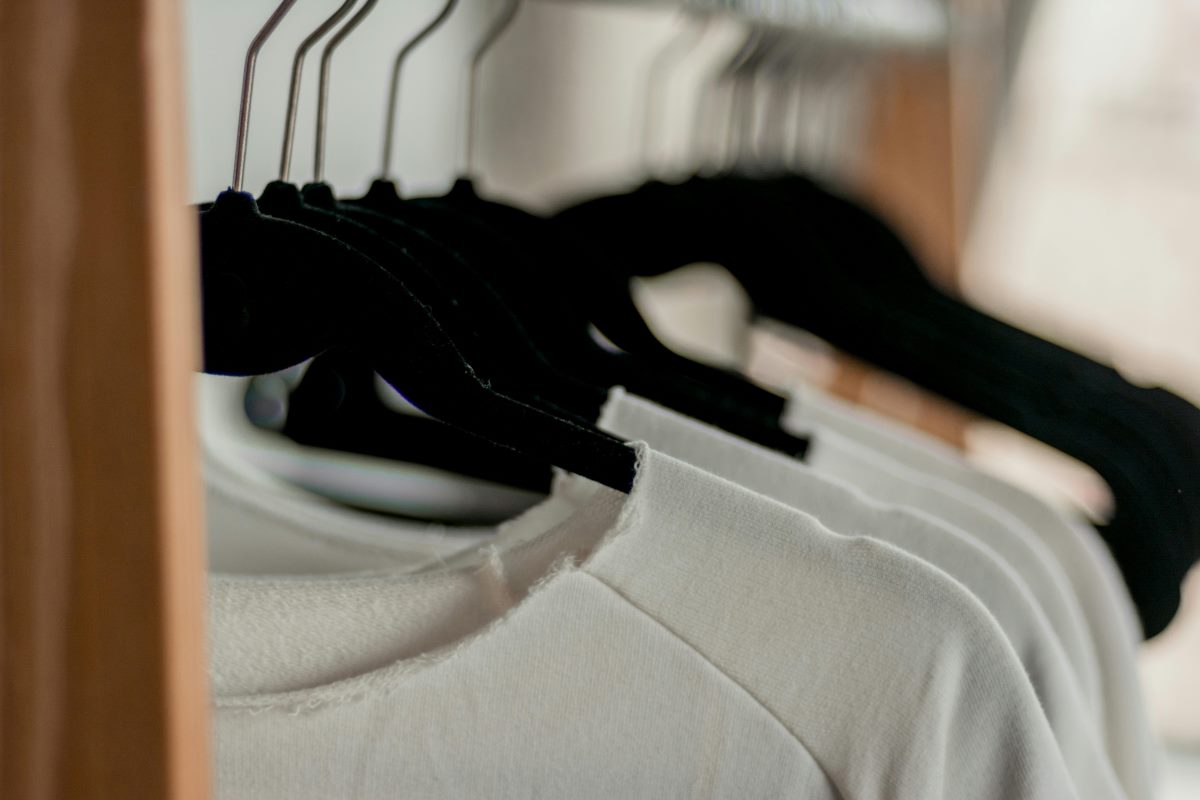Don't let a limited budget slow down your progress as an apparel and merch seller . Get the right tools, inject your creativity, and learn a few of these hacks to craft designs that turn heads.
How to Nail Down Your Brand Logo design example from Penji First and foremost, you need to define your brand look if you haven't yet. Ask yourself, what do I want people to think and feel when they see my merch? It could be adventurous, minimalist, sporty, or quirky. Your brand personality should show in your designs.
For this, you don't need to work with an expensive agency to make them look professional. Cheap tools abound, and even the free ones can do a bang-up job. Canva and Coolors are great examples. You can also use DIY logo generators, such as Hatchful or Looka . An affordable plan from a reliable graphic design service, like Penji or Kimp , is also an excellent option.
Take Advantage of Free Tools Sample mockups from Printful After handling your brand identity, it's time to tackle your merch designs. If you don't have them yet, you can use a wide range of tools such as Figma , Photopea , or Kittl . These can help you create not only designs for your merch, but also graphics for use in promoting them.
And, if you're unaware yet, there are plenty of tools that allow you to see your designs in real life. These mockup generators are a huge help: Placeit and Printful's Mockup Tool .
While we're on the subject of free tools, Pexels , Unsplash , and Vecteezy offer free images and vector graphics for use in your marketing efforts.
Learn to Oursource Designing can take a massive portion of your time, especially if it isn't your strong suit. This is why you need to learn how to outsource and let the professionals do them. Here are a few options (aside from those mentioned above) that won't cost you an arm and a leg:
Pro tip: Choose two or three designers or companies, then build relationships with them. When they understand your brand from the inside out, they'll be able to deliver better and faster.
Consider Printing Costs While designing for apparel and merch requires creativity, you also need to consider the costs of printing. Below are a few tips to help you with this:
Less is more: Designs with two or three colors are cheaper to print. A simple graphic will do the trick, plus, they're easier on the eyes.Understand different printing methods: Screen printing, DTG (direct-to-garment), and embroidery are a few examples of what you can use. Screen printing is suitable for bulk orders, while DTG is best for small runs or complex designs. For a more luxurious feel, embroidery is an appropriate option, although more costly.Use the right files: Export your final designs as high-resolution PNG files. You can also choose to use SVG files that both assure transparency and scalability.Pro tip: Order a few test prints before launching your new products. This is to assure you that your merch looks really good in real life.
Let Your Designs Do the Work Treat your designs as your best marketers. Turn your visuals into scroll-stopping content to help sell your apparel and merch. You can do the following:
Show your products in action: Lifestyle photos perform better than flat product photos. Show people wearing your products and show them happily doing so.Be consistent: Use the same colors, fonts, and tone on all your posts, advertisements, and product pages. A tied-down look helps build trust and make your brand easily recognizable.Use mockups for promos: Don't worry about not having a budget for photoshoots; use mockups.Try videos: Videos are a powerful tool to showcase your merch details, fabric quality, or styles. Motion always gets attention better than static.Simplify Your Workflows As your apparel and merch business grows, you need to stay organized. These hacks can save you hours of work and help keep your brand consistent:
Use templates for new collections: Reuse layouts for your product images, social media posts, and ad graphics. This can help you launch campaigns faster.Automate your posts: Tools such as Buffer and Later can schedule your content in advance. This lets your socials look active even when you're busy with other business matters.Work with a print-on-demand platform: Printful , Gelato , and Printify are a few platforms you can use to handle your printing and shipping tasks.Pro tip: You may want to organize your files by keeping a shared folder. Categorize them by product type, seasons, or themes. Updating becomes quick and easy with this hack.
A Few Common Design Traps to Avoid Even in the most prepared setup, mistakes are still bound to happen. What you can do is to minimize these errors by anticipating them and having workarounds in place. Here are a few pitfalls to watch out for:
Overcomplicated designs: Too many colors, shapes, fonts, or effects can clutter and make your designs look outdated. Simple visuals usually stand out better.
Poor or lack of contrast: One of the most basic design principles is contrast, and it's wise to use it in your designs. Make sure that your text and graphics are easily seen against their backgrounds. Check your designs; sometimes, they look fine on a screen but can become completely indistinguishable in print.
Using unlicensed assets: Don't use copyrighted images or fonts unless you bought them.
Ignoring print specifics: Double-check your design dimensions and resolution before sending them to the printers.
Skipping test prints: This ensures that your merch is the way you envision it. Order samples to catch shifts in color or issues in sizing before you sell.
Conclusion A successful apparel and merch business need not a huge budget or a whole design team. Careful planning, some creativity, using the right tools, and a few smart systems can go a long way in making your brand look polished and professional.
Photo credit: Leticia Ribeiro on Pexels



